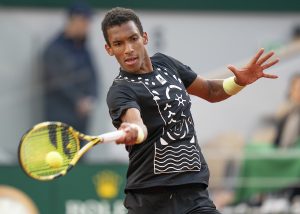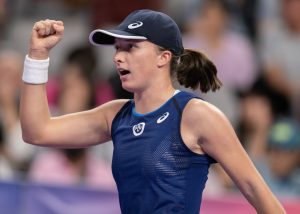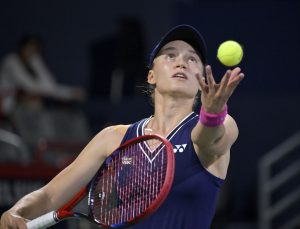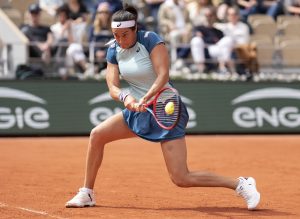Simona Halep’s run to the final of the French Open has revived memories of the outstanding playing career of her manager, Virginia Ruzici, who won the French title nearly 40 years ago, in 1978. Halep hopes to emulate Ruzici’s success and in the process perhaps begin another period of glory for Romanian tennis to rival its golden age of the 1970s.
Much has been made of the contribution that Halep’s coach, Darren Cahill, has made to her career since he began working with her at the start of 2016. Cahill’s reputation as a coach is undoubtedly spectacular, as he helped Lleyton Hewitt and Andre Agassi to become the youngest men’s world No. 1 and the oldest men’s world No. 1, respectively, in the early noughties. He definitely seems to have had a calming effect on the previously volatile Halep that is similar to the effect that Ivan Lendl has had on Andy Murray. However, Virginia Ruzici, who has been Halep’s manager for a lot longer than Cahill has been her coach, has also had a profound effect upon her development as a player and potential Grand Slam champion.
Ruzici’s achievements as the first and so far only Romanian woman to win a Major would have been an inspiration to the young Halep when she was growing up in the city of Constanța on Romania’s Black Sea coast. Ruzici had a superb playing career in both singles and doubles. Indeed, until Martina Navratilova came along to dislodge her she was the most successful female player from the old Eastern Bloc countries. However, unlike Navratilova, who renounced her Czech citizenship to become an American citizen in the early 1980s, Ruzici has always retained her Romanian passport and it was her continuing links with her home country that enabled her to talent-spot the young Halep and eventually become her manager.
Ruzici was born in 1955 and grew up under the Ceaușescu dictatorship. Nevertheless, her obvious talent as a tennis player, in particular her fine forehand, allowed her to escape from the worst confines of Communist Romania. She turned professional in 1975 and less than three years later had won the French Open. In the final, she beat the defending champion, Yugoslavia’s Mima Jaušovec, who a year earlier had become the first Eastern European woman to win a Major title. Ruzici beat Jaušovec comfortably (6-2, 6-2) and presumably the ease of that victory assisted her as she went on to win the women’s doubles title (intriguingly, her doubles partner was Jaušovec) and reach the mixed doubles final, which she lost when her partner, the Frenchman Patrice Dominguez, had to retire injured.
However, Ruzici’s stunning victories at Roland Garros in 1978 effectively marked the end of the most successful period in Romanian tennis history. That period had begun nearly a decade earlier with the emergence of the original bad boy of tennis, Ilie Nastase (whose recent exploits with the Romanian Fed Cup team have reminded tennis of just how bad he can be). Nastase won the US Open in 1972 and the French Open in 1973, and he nearly won Wimbledon in 1972, narrowly losing to America’s Stan Smith in one of the all-time great Wimbledon finals. In addition, Nastase, ably assisted by his usual doubles partner, Ion Tiriac, who went on to oversee Boris Becker’s rise to the top of the men’s game in the 1980s, led Romania to three Davis Cup finals in 1969, 1971 and 1972, narrowly losing on each occasion to the USA, who included Nastase’s bête noire, Smith.
Ruzici apart, Romanian women’s tennis did not reach the same giddy heights as Romanian men’s tennis in the 1970s, but Mariana Simionescu was also a regular on the WTA tour, even if she was ultimately more famous for becoming Bjorn Borg’s first wife. As for Ruzici herself, she never again matched her achievements of 1978, although she was a continuous member of the women’s top 20 until the early 1980s and she did reach one other Grand Slam final, when she again made the final at Roland Garros in 1980. In that final, however, she faced a far tougher opponent than her doubles partner, Jaušovec, as Chris Evert beat her in straight sets (including a 6-0 first set) on the way to winning her fourth French title.
Ruzici gradually slid down the women’s rankings until she retired in 1987, and after her and Nastase’s Grand Slam victories in the 1970s the only Romanian player to really make a mark in world tennis was Victor Hănescu, the giant (at 6 foot, 6 inches) who reached the world’s top 30 in 2009 before injuries took their toll on him. That was until Halep began her rise to the top, under Ruzici’s tutelage.
Halep will begin Saturday’s French Open final as the favourite, as she was at the start of the tournament after the withdrawal of Serena Williams, the lack of a Wild Card for Maria Sharapova, and the early elimination of Angelique Kerber. It will be her second French final (she lost to Sharapova in 2014) and she will hope that her greater experience and better all-court game will tell against the youthful energy and sheer hitting power of Jelena Ostapenko. Whatever the result, though, with Irina-Camelia Begu and Sorana Cirstea emerging alongside Halep in Romania’s Fed Cup team (they beat Great Britain earlier this year in a play-off and hope to return to the World Group in the coming years), there is at last some hope of a genuine resurgence in Romanian tennis.
Enjoy what you read? Make sure to take a look at our complete 2017 French Open coverage for other great content similar to this.






